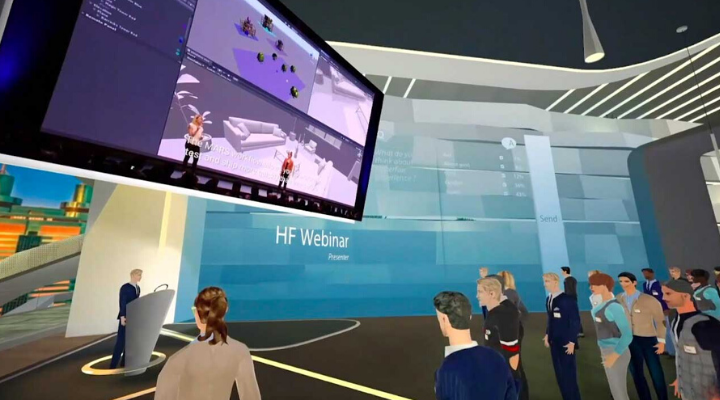The next big thing this year? Virtual trade shows. They have gone from niche events for a small group of enthusiastic pioneers to worldwide trends. The current crisis, combined with the advances in technology, has created the conditions for an unprecedented expansion of this branch. Many are still puzzled or even frightened at the idea of interacting with each other virtually and being able to visit or even exhibit at a trade show without moving from their desk. It’s understandable: everything that is radically new always inspires a modicum of fear mixed with curiosity. Those who have tried these events, however, have discovered that the advantages are innumerable, to the point that this format is considered better than the traditional one in many ways. Let’s take a closer look at virtual trade shows and how they are changing the events industry.
What are virtual shows and why are they organised?
It starts, as it always does, with the needs of companies and professionals in a specific industry – GECO, for instance, was born to meet the needs of the tourism, energy and mobility industry. Whatever the branch, all companies need to connect, interact with each other, showcase their products and promote their services. In this sense, it is important to understand that the organisation of virtual trade shows is not intended to replace traditional events entirely, but rather to support and complement them. They aim to provide event organisers with some valuable additional tools, enabling them to make the best use of available resources and achieve their objectives. In addition, of course, to ensuring the continuity of professional and commercial relations even at a time when travelling and joining an event may be difficult or inadvisable on health and safety grounds.
What can you expect from a virtual trade show?
Virtual trade shows bring buyers and sellers together in an engaging, entirely digital, and highly interactive environment. Each user can move around the virtual space using their personalised avatar and access the exhibition areas, view products, and organise private or group meetings. The advantages are endless, regardless of whether a traditional event is being organised alongside the virtual one or not. In the case of tourism, for example, it is possible to offer potential customers high-quality multimedia and interactive material. Besides, participation in this type of event is also accessible to small- and medium-sized companies that would normally struggle to meet the travel and accommodation costs necessary to send one or more team members to attend a traditional event.
What are the advantages of virtual trade shows?
There are two aspects of virtual shows that have won over the majority of professionals in the tourism field, even those who were initially sceptical: traceability and data management. Of course, data is also acquired and stored during traditional events: guest registration will always provide event organisers with an interesting e-mail database, to say the least. Feedback can also be collected after a traditional event, in the form of a questionnaire, and used to try and determine which features of the event were successful and what to improve in future editions. This type of data, however, can never be considered completely accurate and should always be taken with some degree of approximation. In the context of a virtual trade show, however, it is possible to have exact assessments of the use of each feature and to take timely action to solve problems and improve the flow of information. This makes it possible to create increasingly rewarding and effective experiences for users, with undeniable advantages for both the organisers and the companies taking part in the event.

